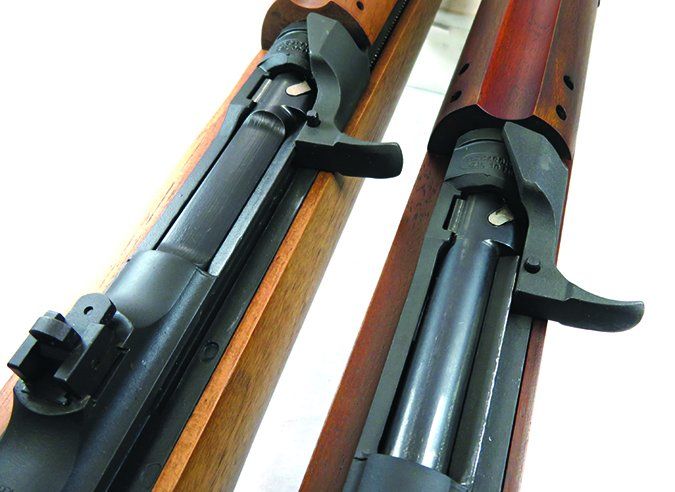
The M1 Carbine was adopted during World War II, then proceeded to arm our soldiers during the Korean War and Vietnam War, making it one of the most widely produced of all U.S. Military rifles. Millions were produced, and at one time, surplus models were quite common and inexpensive. Try finding a vintage M1 Carbine today, and you will pay close to $1000 for a well-used specimen. Costs, however, will vary dramatically depending on which manufacturer produced the M1 Carbine, the model, features, and condition.
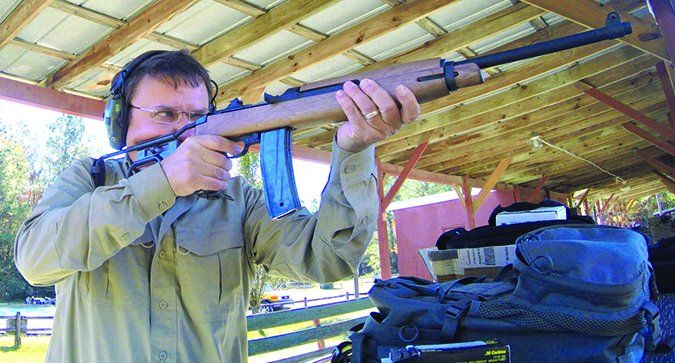
Avid M1 Carbine collectors know that Winchester finalized the design of the M1 Carbine and produced the rifle, but other manufacturers like Inland Mfg. Division of General Motors Corp., Underwood (a typewriter manufacturer), IBM (when they made adding machines), Rock-Ola (a jukebox manufacturer), and others all received government contracts to produce the Carbine. Eleven manufacturers in total produced the M1 Carbine for the U.S. Military. Numerous commercial copies were produced after WWII. These commercial copies cost less, but their quality varies depending on the manufacturer, and some are not true reproductions of the M1 Carbine; rather, they are more of each manufacturer’s “interpretation” of the M1 Carbine. Some are even chambered in 22 L.R., such as the Ruger 10/22 M1 and 9mm Luger, such as the Chiappa M1-9, respectively. They sort of look like an M1 Carbine but use a different operating mechanism. A true M1 Carbine is chambered in 30 Carbine and uses a gas-operated, short-stroke piston mechanism with a rotating bolt.
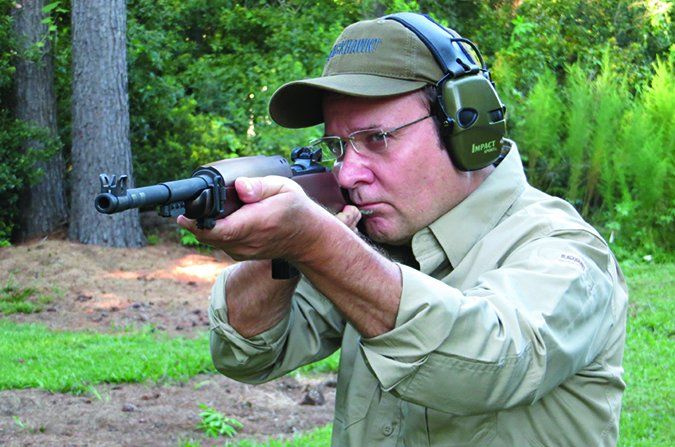
We opted to test two new M1 Carbine reproductions, the M1 1945 Carbine from Inland Mfg. (not the original Inland Mfg. but a new company) and the M1 Carbine Paratrooper from Auto-Ordnance (A-O). We found on three websites (Brownells.com, CheaperThanDirt.com and BudsGunShop.com) that the Inland’s cost ranged from $999 to $992 and the A-O from $828 to $752. Both of these are built like Uncle Sam intended using a gas-operated, short-stroke piston system with a rotating bolt, and they are chambered in 30 Carbine.
We looked at these two Carbines for historical accuracy, for competition use in M1 Carbine Matches, and as a home-defense choice. In our opinion, the Inland is suitable for all three, where the A-O is not competition ready, but it satisfies the other two roles pretty well. Bottom line, our test team found these two carbines to be reliable, depending on the ammunition employed, offer good performance if the cartridge is used within its limits, and unlike some other M1 Carbines our testers have fired in the past, these two reproductions are accurate enough for nearly any use.
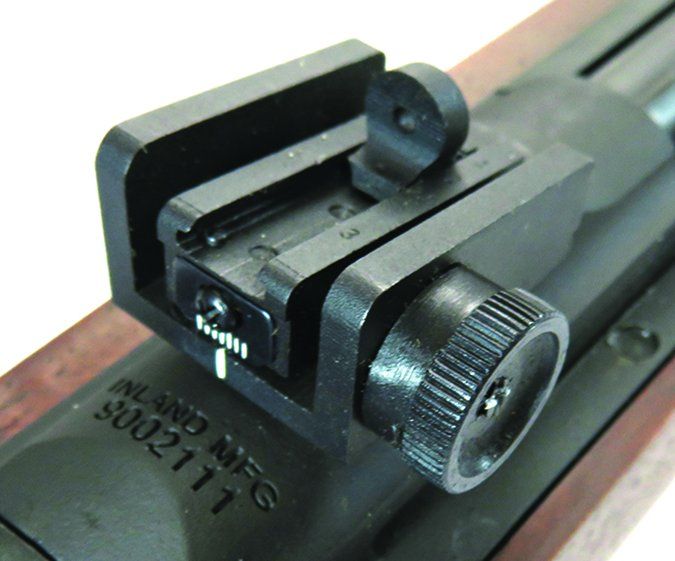
How We Tested
Since the Carbine is a mid-20th century design, there are a few features that might seem dated to the modern shooter, because they are. The crossbolt safeties were located outside the trigger guard, which is common on many shotguns and rimfire rifles, but less true for centerfire rifles. The magazine-release button, which is larger, sits just forward of the safety button. Initially, testers new to the Carbine had to pay attention so they did not press the wrong button, but they soon learned and could determine by touch which button was which. Not a ding on either the Inland or A-O, just a feature of the M1 Carbine design worth noting.
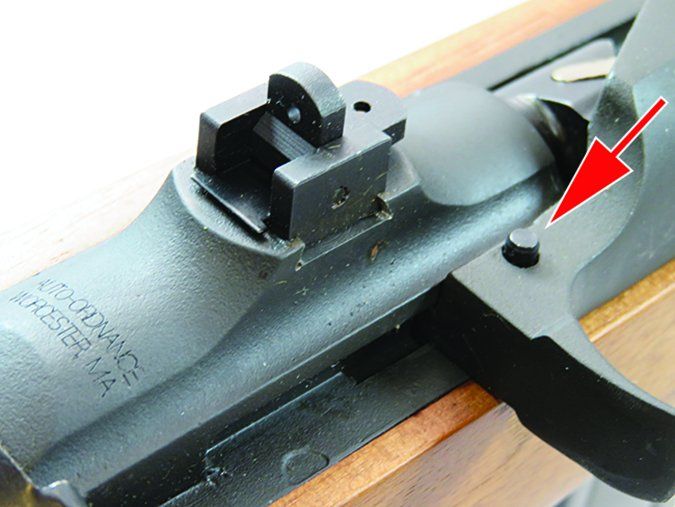
Another feature of the design requires the magazines to be loaded fairly straight into the magazine well. Today’s modern rifles typically have a flared magazine well that funnels the magazine home and offers the shooter a bit of wiggle room when inserting a magazine. Those testers with AR-15 experience found it took slightly more effort to insert and seat the magazine. Once the rifles were loaded, some testers ran the Carbines like an AK, racking the operating handle from under the rifle with their support hand and grasping the stock at the pistol grip with their firing hand. Some became pretty efficient reloading the Carbine during testing.
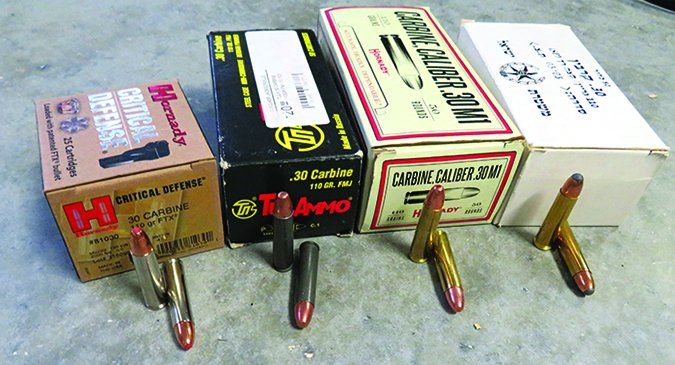
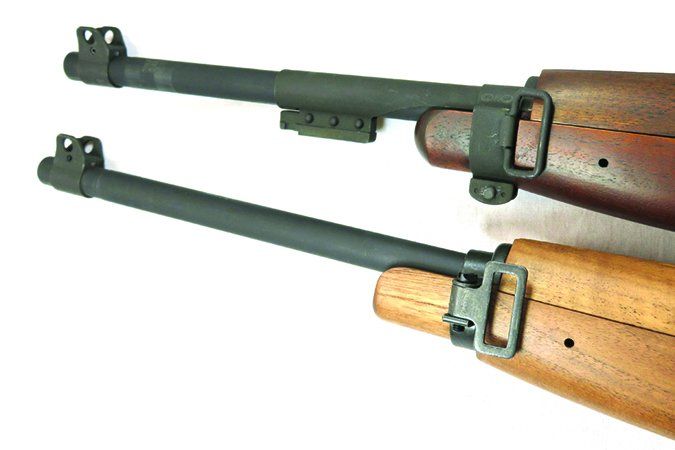
Ammo can be difficult to find at big box and smaller retailers. We found some locally in North Carolina (GunShopJax.com) some IMI (Israeli Military Industries) ammo with 110-grain SP (soft point) bullets for $30 for a box of 50 cartridges. Online, it is quite easy to source ammo. We purchased Hornady Critical Defense with 110-grain FTX bullets ($33/20), Hornady 30 Carbine with 110-grain full metal jacket (FMJ) bullets ($39/50), Aguila 110-grain FMJs ($24/50), and steel-case TulAmmo rounds, also with 110-grain FMJs ($15/50). If you see the trend, the 30 Carbine’s sweet spot is the 110-grain bullet. Military ammo was loaded to a muzzle velocity of 1990 fps and muzzle energy of 967 foot-pounds. Of the four ammo types tested, the Hornady Critical Defense ammo was loaded to 2000 fps, while the TulAmmo, IMI, Hornady standard, and Aguila were at military velocity of about 1990 fps. The TulAmmo had the lowest velocity of all ammo tested. The cost is about 4 cents a round, making 30 Carbine ammo slightly less expensive than 223 Remington ammo.
30 Carbine Range Data
| IWI 30 Carbine 110-gr. SP | Inland Mfg. M1 1945 Carbine | Auto-Ordnance M1 Carbine Paratrooper |
| Average velocity | 1902 fps | 1816 fps |
| Muzzle energy | 884 ft.-lbs. | 806 ft.-lbs. |
| Smallest group | 2.6 in. | 2.1 in. |
| Average group | 2.85 in. | 2.6 in. |
| Hornady 30 Carbine 110-gr. FMJ |
||
| Average velocity | 2046 fps | 1984 fps |
| Muzzle energy | 1023 ft.-lbs. | 962 ft.-lbs. |
| Smallest group | 3 in. | 2.25 in. |
| Average group | 3.05 in. | 2.67 in. |
| Hornady Critical Defense 30 Carbine 110-gr. FTX | ||
| Average velocity | 1982 fps | 1866 fps |
| Muzzle energy | 960 ft.-lbs. | 851 ft.-lbs. |
| Smallest group | 2.4 in. | 2.4 in. |
| Average group | 2.75 in. | 2.8 in. |
| Aguila 30 Carbine 110-gr. FMJ | ||
| Average velocity | 1960 fps | 1901 fps |
| Muzzle energy | 938 ft.-lbs. | 883 ft.-lbs. |
| Smallest group | 2.05 in. | 2.1 in. |
| Average group | 2.25 in. | 2.3 in. |
| TulAmmo 30 Carbine 110-gr. FMJ | ||
| Average velocity | 1953 fps | 1893 fps |
| Muzzle energy | 932 ft.-lbs. | 875 ft.-lbs. |
| Smallest group | 2.65 in. | 2 in. |
| Average group | 2.87 in. | 2.55 in. |
| To collect accuracy data, we fired three-shot groups from a bench using a rest. Distance: 100 yards with open sights. We recorded velocities using a ProChrono digital chronograph set 15 feet from the muzzle. | ||
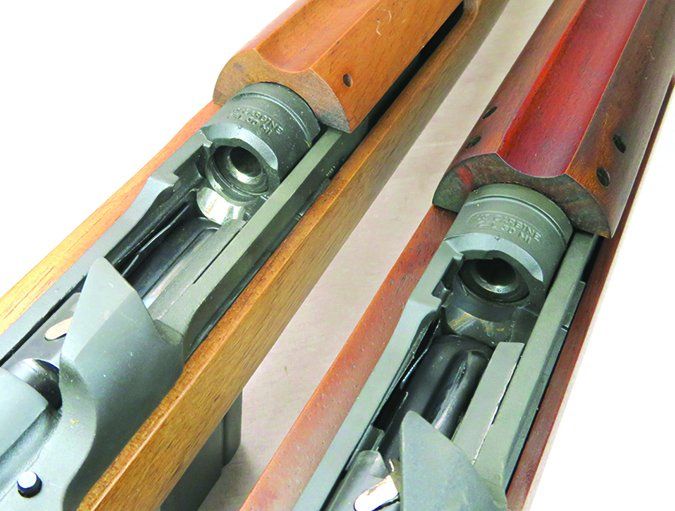
The 30 Carbine has a reputation as being an anemic cartridge, and that is true if you compare it against the 30-06 Springfield. The 30 Carbine round was designed as an intermediate cartridge between the 30-06 Springfield in the M1 Garand and 45 ACP in the M1911A1 pistol. The 30 Carbine fits the role, but push it too far, and naturally it will underperform because it was not designed to replace the 30-06. As a hunting round, it can kill up to deer-size game if used at medium distances down to inside 100 yards.
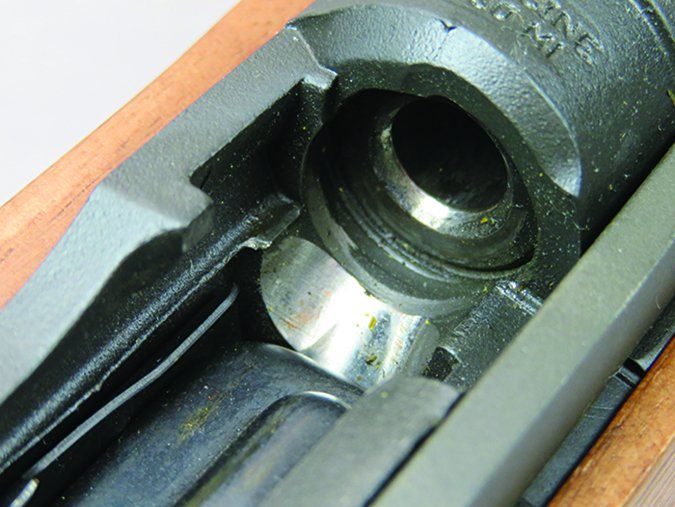
Magazines—new and surplus—are quite easy to acquire and inexpensive, from $8 to $35 depending on manufacturer and capacity. The M1 Carbine was originally issued with a 15-round magazine, and 10-, 15-, and 30-round magazines are the most common. Less common are 5-round magazines. We also acquired a new 30-round magazine from the A-O website (Auto-Ordnance.com; $35) and ran the magazine in both rifles.
We tested with iron sights at 25 yards and 100 yards to see how well, or not so well, the Carbines performed. We were pleasantly surprised at the accuracy and performance. Here is what we learned from these reproduction M1 Carbines.
Inland Manufacturing M1 1945 Carbine 30 Carbine, $1079
GUN TESTS GRADE: A-

The Inland M1 costs more, but it offered a good interpretation of the last production M1 Carbine manufactured in 1945.
| ACTION TYPE | Semi-automatic gas-operated short-stroke piston |
| OVERALL LENGTH | 35.75 in. |
| BARREL LENGTH | 18 in. |
| SIGHTS | Adjustable aperture rear; fixed front |
| OVERALL HEIGHT | 6.9 in. |
| STOCK LENGTH OF PULL | 13.2 in. |
| WEIGHT UNLOADED | 5.2 lbs. |
| WEIGHT LOADED | 5.8 lbs. |
| CAPACITY | 15+1 |
| ACTION FINISH | Parkerized |
| BARREL FINISH | Parkerized |
| MAGAZINE TYPE | Detatchable steel box |
| STOCK | Smooth walnut |
| TRIGGER PULL WEIGHT | 6.1 lbs., single stage |
| SAFETY | Pushbutton |
| WARRANTY | 1 year |
| TELEPHONE | (877) 425-4867 |
| WEBSITE | Inland-Mfg.com |
| MADE IN | USA |
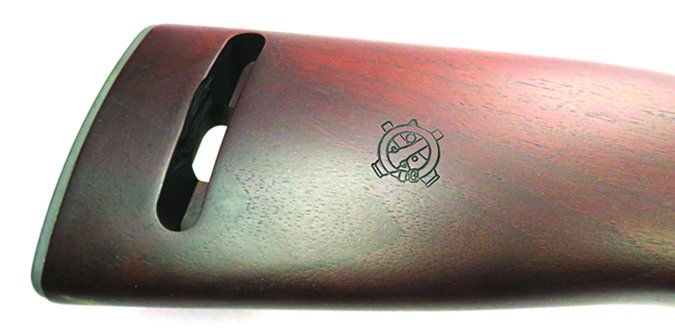
The M1 1945 Carbine is modeled after the last M1 Carbine the original Inland manufactured in 1945. Inland Manufacturing was founded in 2013. The company purchased the rights to use the Inland Manufacturing name, which during WWII was a division of General Motors. Back in the day, Inland produced most of the M1 Carbines for the government in Dayton, Ohio, and the new Inland is also located in Dayton, but it has no affiliation with GM. All parts are made in the U.S. According to Inland, all the parts of a new M1 are interchangeable with parts from an original M1.
Opening the box, the owner finds the Inland M1 set into die-cut foam and sees that it comes with a canvas sling, oiler (which is used to hold the sling into the stock) and one 15-round magazine.
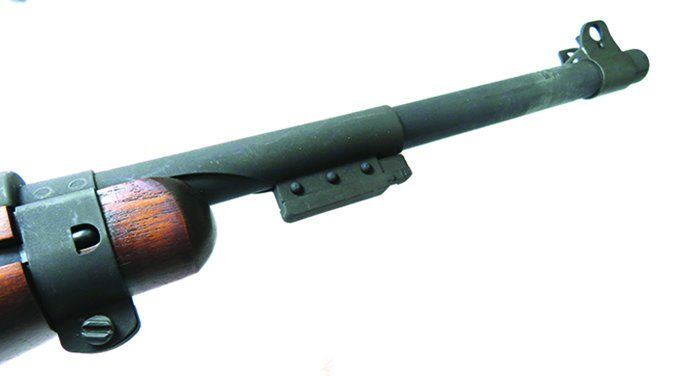
The M1 1945 Carbine is made with an investment-cast receiver mated to an 18-inch barrel with four grooves and a 1:20-inch twist rate. The features that make the Inland historically accurate are numerous, including the type-3 bayonet lug and barrel band. Early original production rifles had no bayonet lug. The lug was later incorporated into the design. Original M1s also had simplified sights, a flip-up aperture with two settings, one for 150 yards and the second for 300 yards. Later models used a modified sight with a sliding ramp, and so does the new Inland.
The new Inland also uses a pushbutton safety. Late-model originals changed the safety from a pushbutton to a rotating lever. Elsewhere, original M1s had a flat bolt — basically, the top of the bolt was milled flat. Later models used a round bolt to reduce manufacturing time. These features were also incorporated into the new Inland.
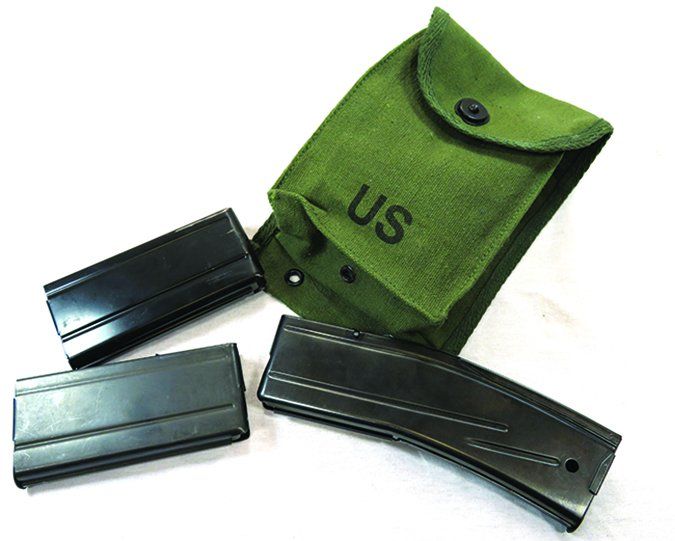
The walnut stock is referred to as a “low wood” stock, which means it is relieved next to the operating slide. Early M1s had wood nearly covering the slide, and the wood was prone to splitting in this area. From a historical perspective, we felt the Inland was a good facsimile of the original carbine.
The stock on the Inland was a plain piece of walnut with an Inland cartouche on the right side of the stock near the metal buttpad. The metal on the action wore a nice Parkerized finish. The steel magazine was blued. The trigger was a single stage with some creep that broke at 6.1 pounds, comparable to other M1s we fired at the same time for reference. Typical service-style trigger. In hand, the Inland was lively and came to the shoulder fast.
We found the sights allowed us to easily acquire a target. We first fired the Inland with Aguila ammo, which is close to mil-spec ammo, and we found the rifle ran well. No issues. We did find that the Hornady Critical defense ammo initially did not feed properly. The bullet tip would jam on the feed ramp. Critical Defense FTX bullets have a polymer insert in the bullet’s hollow point. The bullet shape also has more of a point. We measured the cartridge length and found the Hornady Critical Defense cartridge had an overall length of 1.68 inches, which is the maximum SAAMI length for 30 Carbine cartridges. The other ammo measured 1.67 inches, on average. One thing to note, ball ammo or FMJs operate best in original M1 Carbines, and in the Inland we found this to be true as well. The rounded FMJ bullet tip helps the cartridge feed better. We thought we would have the same ammo issue with the IWI ammo, which uses a soft-point bullet, but the IWI ran flawlessly. We dinged the Inland rifle’s final grade a half notch as a result because the OAL of the Hornady cartridge was to spec.
At 100 yards, the Aguila ammo performed well, and we were able to shoot our tightest three-shot group, which measured 2.05 inches. The TulAmmo rounds and Hornady Critical Defense also gave good accuracy, averaging close to 2.75 inches. In fact, we were quite pleased with the results because we were using iron sights and a mil-spec-comparable trigger.
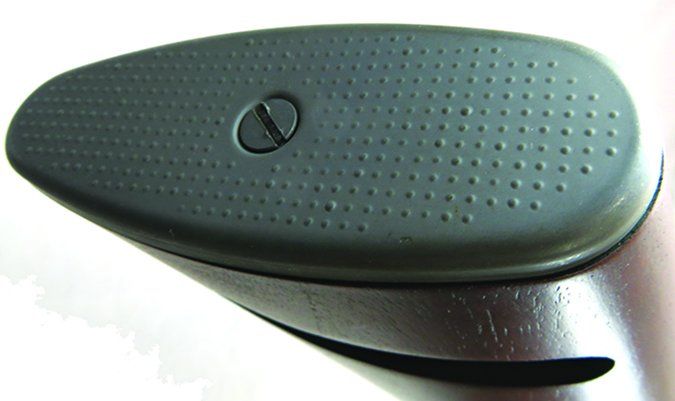
Recoil was mild with not a lot of muzzle blast. Those new to the Carbine easily took to the round and rifle and found it easy to shoot. At 25 yards, fast follow-up shots were quick because recoil was minimal. Since the rifle is only 36 inches long, it is easy to maneuver. With an unloaded rifle, we maneuvered through rooms and hallways with ease. In our opinion, at the distances typically encountered in a home invasion, the Carbine offers plenty of punch. There are less expensive options available, but the Inland could serve as good home-defense firearm.
Likewise, we would use the Inland in CMP M1 Carbine Matches. These matches are fired at 100 yards in four stages with slow and rapid fire and from prone, standing, sitting, and kneeling positions. For this use, the Inland would be a good alternative to an original.
Our Team Said: The M1 1945 was pleasant to shoot, and we would use it for tasks as diverse as competition as well as keeping the ranch safe. It was historically accurate, and collectors of original M1 Carbines would do themselves a service by shooting a new repro rather than wearing out an original and reducing the value. It is an expensive home-defense option, but we wouldn’t mind using it in that role, if push came to shove.
Auto-Ordnance M1 Carbine Paratrooper, 30 Carbine, $941
GUN TESTS GRADE: A-

The A-O Paratrooper is easier to transport due to the folding stock, and it offered good reliability and a lot of shooting fun. We think it is a good interpretation of the WWII model.
| ACTION TYPE | Semi-automatic gas-operated short-stroke piston |
| OVERALL LENGTH | 35.75 in. |
| BARREL LENGTH | 18 in. |
| SIGHTS | Flip aperture rear, fixed front |
| OVERALL HEIGHT | 6.9 in. |
| BUTTSTOCK LENGTH OF PULL | 13.2 in. |
| WEIGHT UNLOADED | 5.3 lbs. |
| WEIGHT LOADED | 5.9 lbs. |
| CAPACITY | 15+1 |
| ACTION FINISH | Parkerized |
| BARREL FINISH | Parkerized |
| MAGAZINE TYPE | Detatchable steel box |
| STOCK | Smooth walnut handguard, folding wire stock |
| TRIGGER PULL WEIGHT | Single stage, 7.1 lbs. |
| SAFETY | Pushbutton |
| WARRANTY | 1 year |
| TELEPHONE | (508) 795-3919 |
| WEBSITE | Auto-Ordnance.com |
| MADE IN | USA |
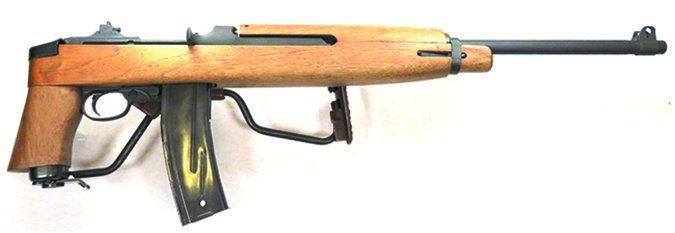
The A-O is a reproduction of the Model M1A1, which is a model variant specifically designed for paratroopers who required a shorter weapon. The original Inland manufactured the M1A1 back in the day. These are rare and quite collectible, and we imagine a collector would be loath to fire a valuable specimen. In our opinion, the A-O makes a great stand-in for the original. Like early original M1A1s, the A-O had no bayonet lug, and the stock was close to original’s, even down to the brass rivets that attached the leather cheek rest to the wire stock.
The sights were per the original, a simple flip-up aperture with two settings, one for 150 yards and the second for 300 yards. Windage was drift adjustable. We preferred the sights on the Inland because they were easier to adjust, but this sight set-up on the A-O is historically accurate, if that’s more to your liking.
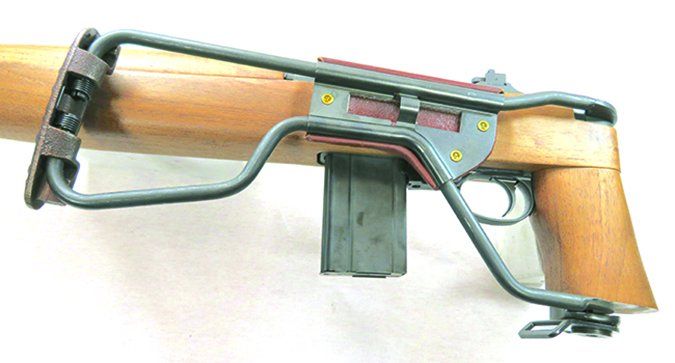
The stock does not lock in an open or closed position. A detent keeps the stock in position, and when we fired using the stock, we could easily knock it out of the open position. Again, this is a feature on this older design. The rest of the stock was plain walnut. The pistol grip was thick and filled the average-size hand. The stock was made of a heavy-gauge wire with a flat unpadded cheek rest and a steel buttpad. The stock folded to the left side of the rifle, and like on the originals, the left side of the stock was milled out and the buttpad pivots to the side so the stocks fold flatter against the wood under the receiver.
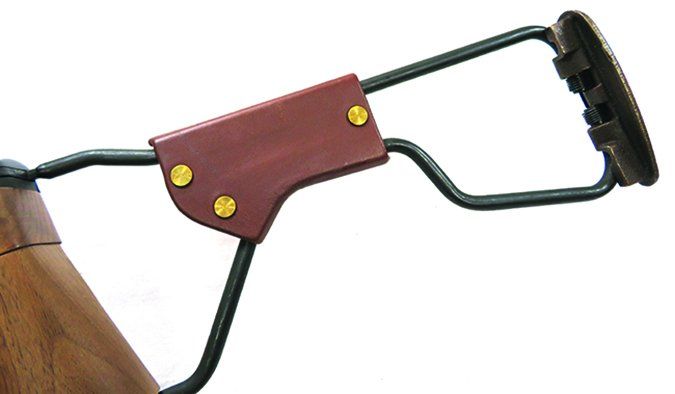
Elsewhere, the A-O was a close copy of the original M1A1 produced in 1942-43. The rear sight, folding stock, no bayonet lug, and flat-milled bolt top are period correct. The rear sight on the A-O is the simple drift-adjustable sight. The A-O’s stock and sight don’t actually sync up. The low-wood stock is a feature of Carbines built in 1944. The rear sight is from earlier models. That’s nit-picking and is not a game changer by any means, if you’re looking at this rifle as a portable shooter.
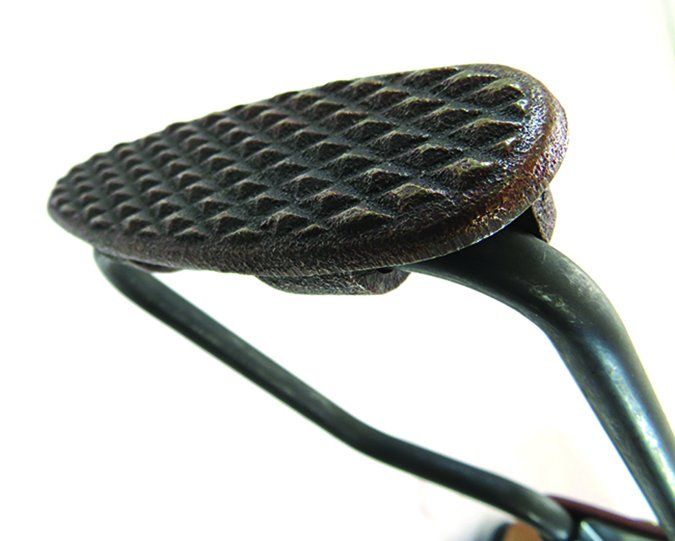
Magazines inserted easily, but we needed to make sure with both Carbines that it was fully seated. When we loaded a magazine of the Hornady Critical Defense ammo, we expected a similar jam as we had in the Inland, but that did not happen. The A-O chewed through all the ammo with no exceptions. Looking at the feed ramps of both rifles, we noticed the A-O was more polished and finished. We suspected the extra polishing on the A-O allowed it to feed the Critical Defense ammo better than the Inland. We used the two 15-round magazines that came with the Carbines and the 30-round magazine interchangeably and had no issues with either rifle. Pressing the magazine release on both the Inland and A-O allowed the magazines to drop free. On the last shot fired, the bolt locked back, open, due to the design of the magazine follower. This allows the user to lock the bolt back by pulling the bolt fully rearward and pressing the bolt hold-back button — a handy feature.
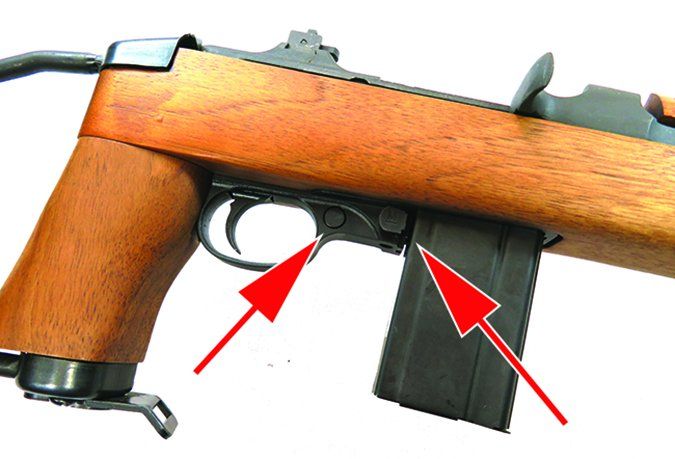
At 25 yards, one tester was able to shoot a near perfect three-shot cloverleaf with the A-O using the inexpensive TulAmmo. Recoil was more noticeable with the A-O since the cheekpiece on the wire stock was not as comfortable. The best average accuracy was attained with Aguila ammo. One tester was able to shoot a 2.0-inch three-shot group at 100 yards with inexpensive TulAmmo; 2.1-inch best groups were obtained with Aguila and IWI. On average, we achieved 2.3- to 2.8-inch groups at 100 yards with three shots. The trigger pull weight averaged 7 pounds, but we still were able to shoot some decent groups. Looking at the data, we noticed the A-O had less muzzle velocity with all ammo types than the Inland.
With the stock folded, we fired from the hip and found it quite easy to walk in hits on clay pigeons set out on a bank at 25 yards. The A-O was also light enough that we could shoot it one handed.
Our Team Said: The A-O was extremely fun to shoot and quite accurate. The folding wire stock is not as stable as the wood stock, but it offers a smaller package to carry. As a home-defense rifle or truck rifle, the A-O is a good choice.
Written and photographed by Robert Sadowski, using evaluations from Gun Tests team testers.


























I like the way this is set up even though I am a paying subscriber
I live in Greeneville, TN, where can I purchase the m1, 30 cal rifle, or a dealer in this area.
I Am Looking For A M-1 Carbine That Is A Daily Shooter > I Like The Way The Gun Looks And
Collect Several Models . I Am Not Looking For A Rifle To Put On The Wall And Look At .
I Want A Good Stock , Barrell,Good Action . If You Have One That Might Be The One I
Am Looking For .
Please Contact Me . Please
Everything Ive read about both rifle mfg,had poor quality workmanship especilly the ISLAND MFG and A.O had serious cycling of the new round, mags were difficult to load,and in general a nice wall hanger.
I.O the least reliable of both, even originals seem to have some of the same problems.
I only complain cause I just got burned on a 1918 rockisland o6,hah to sent it to civilian markmans co to have checked out,bad move ,worth 1/2 what I paid,and this was from a gunsmith I knew…thats all
hope your holiday went well
I recently purchased a new AO Carbine (not paratrooper). Mine was mfg’d in AO’s new plant in Greeley PA. The quality is there. The only failures I had were magazine related (ProMag). Using AO’s magazines this rifle has been 100% reliable. Clean them, grease them and go have fun.
amazing that a repro m1 carbine costs as much as some low end originals!
why is it so hard to find a great quality repro M1 at somewhere in the $500-700 range? If you really don’t want us to use paid for originals then send me an M1 carbine rifle kit and I’ll put mine together myself. If an AR can be built or assembled for less 600 dollars i.e. BCA and PSA specifically why is the old m1 still too expensive? and why an investment cast receiver? not what Uncle Sam paid for in WWII, milled machine and heat treated properly.
not meaning to complain. but really? You would think it was already a collector at these prices?
I bought an A/O with the wood stock. the 30-round magazines are excellent when it comes to “taking a stand” in the house. The neighborhood miscreants had best find another house to try.
I rarely miss.
f.y.i. Regarding the 30 Cal Carbine and history……
I recently purchased an Inland 30 cal carbine from Classiac Firearms in North Carolina.
To Just keep things straight, I paid $1200.00 plus insurance.
It was shipped via FedEX to a local gun shop using their FFL setup.
It came in a cardboard , foam filled box It did not come with bayonet lug or any 10 round magazine, ( small 5 round magazine) and no oiler or strap.
Furniture is GOOD, no flaws .
Upon disassembly, I found a problem with casting at retaining pin which holds trigger assy to breach area.
Became impossible to re-assemble and required extensive grinding of the trigger assy area where the magazine enters the breach. ( a result of investment casting I suppose)
After reading your article regarding how Inland is manufacturing this 30 cal copy, I realized there is a vast difference in an original 30 cal carbines and this imitation.
I am close to eighty, I have been firing 30 cal carbines since I was ten years old ( approx around 1953/1954 ) My family had access to an abundance of ammo during that era due to political connections.
I have experience with the 0riginal Koreon war era bandoliers , strip clips and 15 round magazines , there were no banana magazines in 1953).
The bandoliers came in what resembled a 25 pound green sardine can.
In 1991 I acquired three or four 30 cal carbines of assorted manufacturers also what looked like a prototype marked WINCHESTER ARMS .It had a straight barell configuration which resembled RAMP sights, no protective fins,,just a bead.
I offer this information with the intention of sharing the firearm hobby with your publication and your subscribers.
Best Regards..
Ted Alberta
tedalberta@hotmail.com
Award-winning service, very impressive.